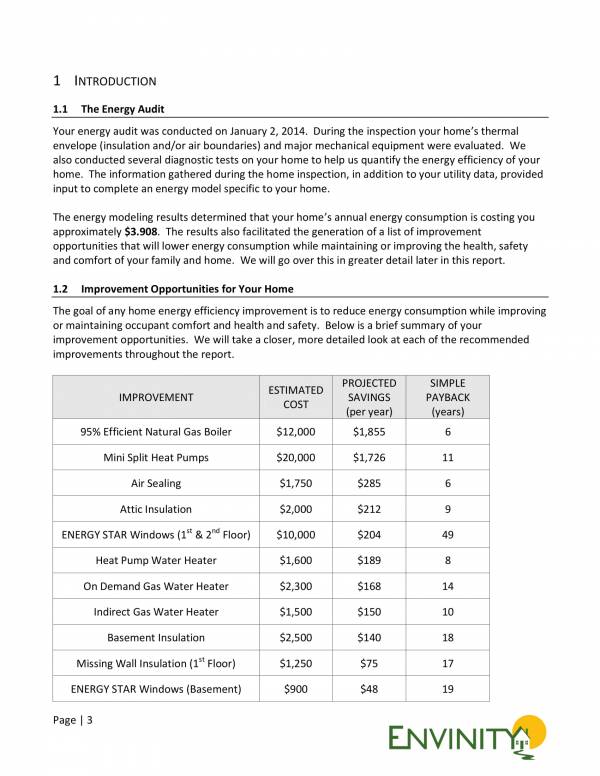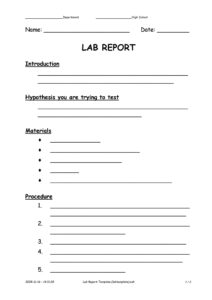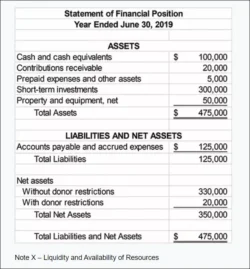Ever wondered where all your home’s energy goes? You’re not alone. Many homeowners are looking for ways to cut down on utility bills and make their living spaces more comfortable and efficient. An energy audit is a fantastic first step, providing a clear picture of your home’s energy performance, identifying areas of waste, and suggesting improvements. It’s like a health check-up for your house, uncovering hidden inefficiencies that might be costing you money.
But conducting an audit is just half the battle. The real power comes from clearly documenting your findings and recommendations. Without a structured way to record observations, it’s easy for crucial details to get lost, making it harder to implement changes or track progress. That’s where a well-designed report becomes indispensable, translating raw data into actionable insights for you or future occupants.
Having a robust home energy audit report template simplifies this entire process. It ensures consistency, covers all necessary aspects of your home’s energy usage, and helps you present the information in an organized, easy-to-understand format. Whether you’re a DIY enthusiast keen on improving your own home or a professional looking to standardize your client reports, a template provides the backbone for a thorough and effective assessment.
What to Include in a Comprehensive Energy Audit Report Template
A truly effective energy audit report isn’t just a collection of notes; it’s a guide to better energy consumption. When you’re putting together your home energy audit report template, think about what someone needs to know to understand the current situation and take meaningful action. It should flow logically, starting with general information and moving towards specific findings and recommendations. This structure ensures no critical detail is overlooked and the report remains clear and actionable.
Begin with a section for general property information. This includes the homeowner’s name, address, contact details, the date of the audit, and perhaps even a brief description of the property type and age. This context is vital, as a 1950s bungalow will have different energy considerations than a new build. Following this, you’ll want to detail the audit scope – what areas were inspected, what equipment was used, and any specific goals or concerns raised by the homeowner at the outset.
Next, delve into the exterior assessment. This is where you document observations related to the building envelope. Think about the condition of the roof, the type and state of windows and doors, the amount and type of insulation in the walls and attic, and any visible air leaks around penetrations like pipes or vents. Highlighting issues like drafty windows or insufficient attic insulation here will lay the groundwork for later recommendations.
The interior assessment focuses on what’s inside the thermal envelope. This includes a review of major appliances (refrigerator, dishwasher, washing machine) and their energy efficiency ratings. Lighting is another big one – are incandescent bulbs still prevalent, or has the home transitioned to LEDs? Critically, the HVAC system needs a thorough look: type of heating and cooling system, age, maintenance history, and thermostat type. Don’t forget to check for adequate sealing around interior doors and any unusual drafts.
Finally, the report should culminate in an analysis of energy consumption and specific recommendations. This section takes all your observations and translates them into practical advice. It could involve reviewing past utility bills to identify consumption patterns and potential savings. The recommendations should be prioritized, perhaps based on cost-effectiveness or immediate impact, and an estimated savings potential for each. This is where your template truly shines, turning data into a roadmap for improvement.
Key Sections to Detail in Your Template
- Homeowner and Property Information: Address, contact, home age, square footage.
- Audit Scope and Methodology: Date, tools used, areas inspected.
- Exterior Envelope Assessment: Windows, doors, insulation levels, air sealing.
- Interior Systems and Appliances: HVAC, water heater, lighting, major appliances.
- Energy Consumption Analysis: Utility bill review, energy usage patterns.
- Recommendations and Action Plan: Prioritized list of improvements, estimated costs, and potential savings.
- Conclusion and Next Steps: Summary of findings, encouragement for action.
Maximizing the Value of Your Energy Audit Template
Once you have a solid home energy audit report template in place, the next step is to use it effectively and continually refine it. A template isn’t just a static form; it’s a dynamic tool that should evolve with your experience and the specific needs of different homes. Tailoring the template to each unique property will ensure that your audits are not only comprehensive but also highly relevant and personalized, driving better outcomes for energy efficiency.
Consider adding sections that allow for photographic evidence. A picture truly is worth a thousand words, especially when trying to illustrate a compromised window seal or a missing section of insulation. Visual documentation makes the report more compelling and helps homeowners grasp the extent of issues more clearly. You might also want to include a "severity" rating for each identified issue, helping to prioritize which problems need immediate attention versus those that can be addressed over time.
Think about how you’ll present the information. While the template provides the structure, the way you articulate findings and recommendations can significantly impact a homeowner’s willingness to act. Use clear, concise language, avoid overly technical jargon, and focus on the benefits of making improvements – not just saving money, but also increasing comfort, improving indoor air quality, and contributing to environmental sustainability. A well-communicated report empowers individuals to make informed decisions about their home’s energy future.
- Customization: Adapt the template for different home types (e.g., apartments vs. single-family homes) or specific audit focuses (e.g., just HVAC, or a full building envelope).
- Visual Aids: Integrate placeholders for photos and diagrams to visually support your findings.
- Actionable Advice: Ensure recommendations are specific, measurable, achievable, relevant, and time-bound (SMART).
- Follow-Up Section: Include a space to track implemented changes and their impact, turning the report into a living document.
Implementing a structured approach to assessing your home’s energy use, guided by a detailed report template, is a powerful step towards a more energy-efficient and comfortable living environment. It transforms the abstract concept of energy waste into tangible issues with clear solutions, allowing you to take control of your utility consumption and make smart investments in your property.
By systematically documenting your findings and presenting actionable recommendations, you’re not just saving money; you’re also enhancing your home’s value and reducing its environmental footprint. Embracing this disciplined approach is key to unlocking significant improvements and enjoying the long-term benefits of a truly energy-smart home.




